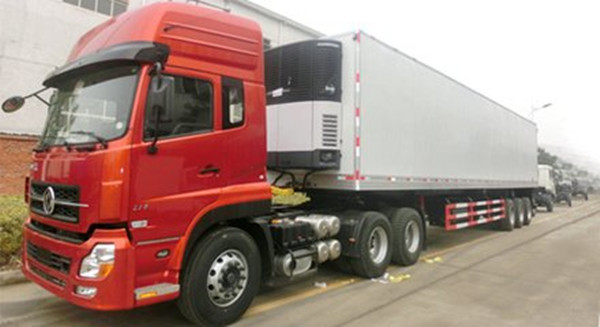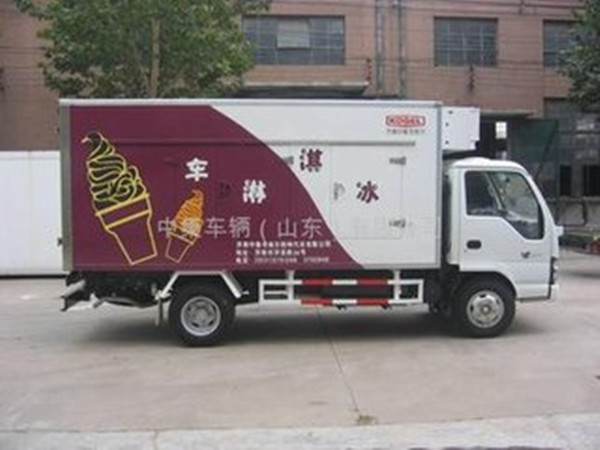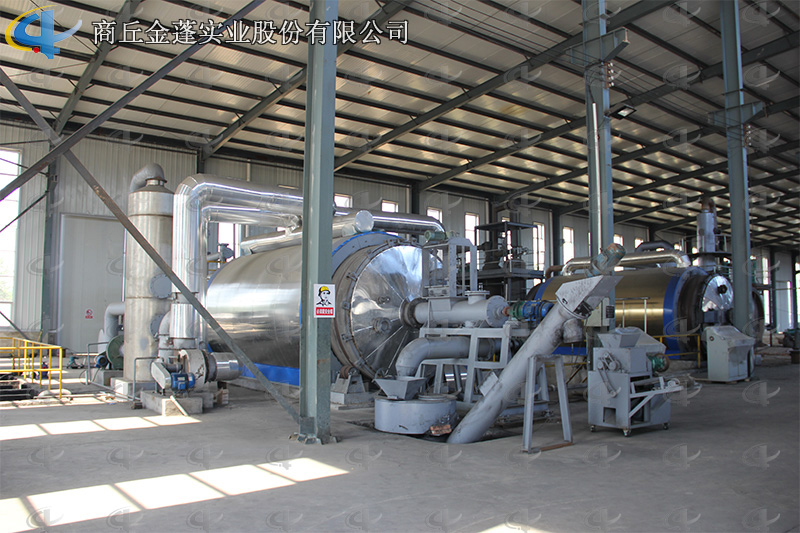The central government strongly supports the refrigerated truck market to show a booming market
With the continuous increase in the types of goods stored and transported, some goods are susceptible to deterioration and deterioration due to conditions such as outside temperature and humidity during storage and transportation. In order to maintain the original quality and use value of perishable goods, cold chain logistics came into being. At present, the refrigerated transport rate of developed countries is more than 50%, and the United States, Japan, Western Europe and other countries are as high as 80% to 90%. China's refrigerated trucks began in the early 1980s and have developed rapidly in recent years. According to statistics, there are about 40,000 refrigerated trucks in China, and the annual output is 6000-7000 units. The refrigerated transport rate of perishable goods in China is only 15%-20%, compared with 80%-90 in developed countries. %. The number of frozen and insulated cars in the United States is 160,000 and that of Japan is 120,000. China is obviously less than the developed countries such as the United States and Japan. At present, there are a large number of goods that need to be refrigerated in China or they are transported by ordinary vehicles. The market for refrigerated and insulated cars is promising. In addition, China Cold Chain Industry Network data show that due to backwardness in preservation technology, about 20% to 25% of fruit and 30% of vegetables in China are rot-damaged in transit transportation and storage each year, and the total amount of damage is as high as 100 million tons per year. Up to 75 billion yuan. Another figure is that, in the United States, there is an average of one refrigerated truck per 500 people, Taiwan is 1,000 people in China, and China has a population of 1.3 billion, but only 40,000 refrigerated trucks are in possession. Experts estimate that China's refrigeration capacity only accounts for 20% to 30% of cargo demand. China is a large producer of agricultural and animal husbandry products, and a major producer and consumer of perishable foods. The cold chain market has great potential. The production and sales volume of meat, aquatic products and eggs in China ranks first in the world, accounting for 25.13%, 17.98% and 42.85% of the world's total output respectively. The sales of urban pigs, sheep, and beef amount to more than 30 million tons each year, poultry, egg, poultry and meat nearly 20 million tons, milk and dairy products about 6 million tons, and the production and sales of fruits and vegetables are even greater. At present, there are more than 2,500 meat processing factories in China, with an annual output of 60 million tons of meat products; more than 2,500 quick-frozen food processing plants, with an annual output of over 10 million tons of frozen food; more than 1,500 cold drink production enterprises, and an annual output of more than 1,000 Ten thousand tons; In addition, there are 50 million tons of aquatic products, 35,000 tons of vegetables, and 61 million tons of fruits each year. These foods that exceed 100 million tons need to meet the needs of consumers through refrigerated transportation. However, the refrigerated transportation rate of the above-mentioned food in our country is only about 15%, which is far behind the 80% ratio in developed countries. In recent years, as the pace of life continues to accelerate, people are increasingly spending more on frozen and frozen foods, and frozen and frozen foods increase production by about 10% each year. Prefabricated food sales accounted for 42.44% of the total sales of frozen foods. In developed cities in China, frozen meat has accounted for 10%-15% of the per capita annual consumption of meat. Although the total amount of frozen vegetables consumed is still small, With the improvement of preservation technology and product quality, consumption is also on the rise. Therefore, the demand for the refrigerated truck industry will surely increase with the improvement of the people’s living standards. There are many problems with domestic cold chain logistics. First, cold chain logistics companies are small in scale, poor in management, and low in concentration. The number of small enterprises is too large and the number of national enterprises above designated size is relatively small. Most enterprises are weak and have many, small, scattered and chaotic phenomena. At present, the size of the cold chain market in China has reached about 112 million tons. However, the characteristics of the third-party cold chain logistics industry are still dominated by niche people. Judging from the top 100 cold-listed logistics companies released by China National Federation of Materials, the total revenue of the top 100 cold-chain companies is 10.902 billion yuan, accounting for only about 10% of the nation's total cold chain revenue. It can be seen that the phenomenon of unbalanced development of cold chain logistics in China is still very obvious, and the marketization level and concentration of cold chain logistics are still low. Second, the cost of cold chain is high and the revenue is very low. The problems faced by fresh e-commerce are mainly due to the high cost of cold-chain logistics, which is generally 30% to 40%, and even exceeds 100%. If it is not able to control costs well, it will be difficult to survive. Third, the problem of broken links is serious. The chain-breaking phenomenon that occurs in the circulation of fresh products has become the culprit in causing hidden dangers in food safety. From the last-kilometer bottleneck that has always existed in China's cold-chain market to the speech made by the representative of Li Xiaohong on this year's meeting on the “first kilometer†of agricultural product cold-chain logistics, there are many problems in the transportation of fresh food. At present, domestic third-party cold-chain logistics companies are mainly engaged in cold chain storage and transportation links, and do not form a complete, systematic cold chain; China's cold-chain logistics standards are lacking, post-production pre-cooling of fresh agricultural products and grading in low-temperature environment Commercial processing methods such as packaging and processing have not yet been popularized. For cold chain logistics companies, whether it is the first or last kilometre, how to ensure that foods are always at a low temperature in the transportation process is the focus of the whole cold chain system, and it is even more difficult. Fourth, the complete cold chain system has not yet formed. At present, the degree of marketization of domestic cold chains is very low, and third-party intervention is rare. The lack of hardware facilities for cold chain construction, obsolete facilities and equipment, and low technological content make it impossible to provide low-temperature protection for perishable food circulation systems, and can easily cause large losses. Not only the logistics cost is too high, but also the security risks are prone to occur; the cold chain lacks overall planning and integration of the upstream and downstream; the technical standards are not perfect; the cold chain logistics is not coordinated and the layout is unreasonable; the cold chain logistics and cargo information are not symmetrical.    Third, the cold chain logistics market has great potential to drive the refrigeration and insulation car market 2016 will be the beginning of the 13th Five-Year Plan. With the implementation of the 13th Five-Year Plan, the One Belt One Road Strategy, and the Beijing-Tianjin-Hebei Synergy Development Strategy, the cold chain market will usher in a rare opportunity for development in 2016 and during the 13th Five-Year Plan period. The first is the cold chain logistics market. It will continue to grow rapidly. From a macro perspective, the trials in the domestic free trade area have expanded, and the number and types of imported fresh products have significantly increased; APEC has made greater breakthroughs in the Asia-Pacific free trade zone and has brought new opportunities. Domestic cold chain companies have begun to follow the national strategy and gradually go abroad. Cross-border acquisitions have become a new trend. From the microscopic point of view, the per capita spending power in China has increased, and the quality requirements for fresh foods have increased, and the recognition of cold chain standards has been strengthened. The activation of demand in the rural market and the entry of agricultural products into cities and abroad will further stimulate the development of the cold chain. With the accelerating process of urbanization and the continuous escalation of consumer spending, people's further attention to food safety and life and health, the overall development trend of the cold chain industry will continue to rise. Second, the Internet cold chain logistics will continue to exert its force. With the continuous integration of cold chain Internet, the original industrial institutions and supply chain will be remodeled. At the same time, new cold chain business opportunities will be released. Whoever seizes the opportunity will be able to stand out from the crowd. Third, capital will further flow and gather into the cold chain market. In addition to direct entry from manufacturers, traditional logistics providers, e-commerce access, traders (fresh import traders and freight forwarders, etc.), refrigeration equipment manufacturers have entered the cold-chain logistics industry, I believe there will be follow-up . As the third-party cold chain, fresh e-commerce, cold chain zone, and cold storage facilities have become investment hotspots, the involvement and driving force of capital has been increasingly strengthened. In the future, more domestic and foreign companies will have the advantage of carrying capital. Enter the cold chain logistics market. Fourth, the cold storage infrastructure has been continuously upgraded to open up new markets for refrigerated and insulated cars. According to the estimation of the Ministry of Agriculture, by 2020, the per capita vegetable consumption in China will increase by 30 kg on the basis of the existing 370 kg. The new demand will be mainly resolved by increasing the yield and reducing the loss. In addition, the output of quick-frozen foods has increased at a rate of 20%, and has even grown at a high rate of 35% in the past three years, far higher than the average growth rate of 9% in the world. Judging from the current development status, the huge market demand for refrigeration and refrigeration urgently requires a significant increase in the cold chain industry, such as cold storage, and calls for sound and vigorous development of China's cold chain are increasing. China's cold chain is facing great development. Historical opportunity. Whether it is the rapid development of the Middle East or the western market, the demand for cold storage is enormous. Fifth, the exponential growth of the express delivery industry has continued to drive the cold chain logistics market segmentation. In recent years, the express delivery industry has developed rapidly with a growth rate of over 50%. It has increased the speed several times that of the national economy and has become a relatively rare industry in the current national economy industry. It is predicted that the compound growth of the 13th five-year express delivery industry will account for about 20%, and the online shopping growth will be 80%. With the continuous subdivision of express delivery market, the last one-kilometre distribution market and mainline transportation market will show a three-dimensional trend, and the cold chain market with fresh delivery will become the hottest market in the logistics segmentation market. Through the above analysis, it can be concluded that the cold chain market will receive more national policy support during 2016 and the 13th Five-Year Plan period, and its market prospects are immeasurable. As an important part of many links in cold chain logistics, cold chain transportation directly determines the safety and health of the people. As a daily essential fresh food and cold medicine, the market demand is huge. Coupled with China's current food safety and pharmaceutical safety issues are more serious, more emphasis on the market demand for cold chain logistics. In the process of rapid rise of cold chain logistics, the demand for cold chain delivery vehicles has naturally increased. Heavy-duty refrigerated trucks (including refrigerated refrigerated trucks) for long-distance and relocating transport, medium-sized refrigerated trucks for nearby materials, light refrigerated trucks for short-distance distribution, and micro-electric refrigerated trucks that cross the streets will develop rapidly. development of.
Medical Waste Treatment Machine
Background:
Medical waste with strong infections, toxic and corrosive,emissions, lax management or improper handling characteristics. It could be winnowing or failure by rain leaching, causing pollution to water body, atmosphere, soil and making direct harm to human body.
In order to ensure the medical waste is timely, efficient and harmless be disposed and to prevent the spread of disease, after years of scientific research, our company designed medical waste treatment machine, which use high temperature
disinfection and sterilization of medical waste biomass decomposition of fuel oil project, can turn a thorough treatment of medical waste, saves the cost of transportation, the landfill can also be used to create higher economic benefits.
End Products Usage:
1. Fuel oil used as fuel for industries such as steel&iron factories,ceramic or chemical industries or hotels restaurants etc.
2. Carbon black be used as garden fertilizer
3. Sync Gas be recycled to heat machine
Medical Waste Treatment Machine Picture;
Advantages:
1. Integrated design of reactor and base, no civil work needed to make the installation faster and easier.
2.Sync gas purification system is designed for developed countries which has very high environmental standard. It makes the full operation process under slightly negative pressure to ensure the safety of operation. And the system removes acid content of the sync gas to ensure the production is both clean and environmental friendly.
3.National Patent Unique Smoke Scrubbers: More efficient removal of the acid gas
and dust of the smoke through neutralization, purification and absorption, environmental friendly without pollution.
4.National Patent automatic Carbon Black Discharging System: Speedy fully
enclosed Auto-discharging under high temperature, avoiding carbon black pollution and saving time.
5.Safety aspect:Production under Slightly negative pressure, automatic
submerged welding technology, ultrasonic nondestructive testing, both manual and
automatic safety devices.
Parameters:
NO.
ITEM
Technical Parameter
1
Door Model
Full Open Door
2
Suitable Raw Materials
Medical waste
3
Structure
Horizontal Type Revolves
4
Main Reactor Size
Φ2200*6000mm
Φ2600*6600mm
5
Daily capacity
5~6MT
8-10MT
6
Work Pressure
Normal Pressure
7
Reactor Rotation Speed
0.4R/M
8
Power
18-25 kw
9
Cooling Method
Cycle Water
10
Type of Drive
External Annular Gear
11
Heating Method
Direct Heating
12
Type of Installation
With Foundation
13
Noise dB(A)
≤85
14
Operating Mode
Intermittent Operation
15
Total Weight(MT)
25~40Mt
16
Installation Space Required
30m*10m
17
Manpower
3~4/batch
18
Shipment
Ф2200×6000=1*40HC+1*40FR
Ф2600×6600=2*40HC+1*40FR
Medical Waste Treatment Equipment Medical Waste Treatment Equipment,Medical Waste To Oil Machine,Medical Waste Recycling Shangqiu Jinpeng Industrial Co., Ltd. , https://www.recyclings.nl



